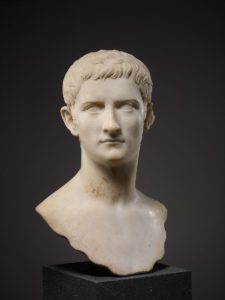Before continuing the routine of Deschner’s series on the criminal history of Christianity, I would like to say a few things about what I said yesterday in the last instalment of the book Calígula. I refer to the film Advise & Consent which, by the way, I watched again yesterday after many years since I saw it for the first time.
In my peripatetic walk today it occurred to me that the best way to criticise American cinema is to first critique Mexican cinema and then look at the parallels. The only book by an author I know personally who has inscribed a few words on the first page for me* is Luz en la Oscuridad: Crónica del Cine Méxicano (Light in the Dark: A Chronicle of Mexican Cinema).
 Francisco (‘Pancho’) Sánchez, a film critic and screenwriter, gave it to me in his own home in front of his wife. I met Pancho, who died ten years ago, at a gathering of film critics that met on Saturdays and that I used to go. Pancho’s book, a man with a good sense of humour by the way, reviews Mexican films from the 1930s to 2002, the year it was published. Well into the book, on page 112, Pancho writes: ‘In 1968 private production was still cloistered in its outdated but successful formulas, of imaginary and chaste young people, charritos [Mexican horse riders with traditional dress] and simplistic comedies’ (the translations are mine).
Francisco (‘Pancho’) Sánchez, a film critic and screenwriter, gave it to me in his own home in front of his wife. I met Pancho, who died ten years ago, at a gathering of film critics that met on Saturdays and that I used to go. Pancho’s book, a man with a good sense of humour by the way, reviews Mexican films from the 1930s to 2002, the year it was published. Well into the book, on page 112, Pancho writes: ‘In 1968 private production was still cloistered in its outdated but successful formulas, of imaginary and chaste young people, charritos [Mexican horse riders with traditional dress] and simplistic comedies’ (the translations are mine).
I hardly ever watch Mexican cinema, but the very little I have seen betrays a world that is completely unreal compared to Mexican reality. My maternal grandmother loved to listen to intimacies told by service people, who were generally indigenous, and it was more than obvious that the family dynamics from which those families came were extremely abusive. (This is not to say that white family dynamics in Western countries aren’t abusive, as Gaedhal tells us in his commentary on this site today.) But what Pancho says is true. Except for Luis Buñuel’s films, the idyllic way in which old Mexican films presented Mexican culture had nothing to do with the reality of the country.
Fifty pages later Pancho writes: ‘In 1975, the penultimate year of [President Luis Echeverría’s] six-year term in office, films of a high realist level such as Canoa were already being made, in a country where until then the divorce between cinema and reality had been almost absolute.’ Ten pages later Pancho adds about that same film, which I have not yet seen:
Indeed, Canoa does not present a bucolic rural reality, with charritos dressed as mariachis, nor an indigenous reality of immobile faces against a backdrop of nopales and pyramids. Its Catholic priest is neither Domingo Soler nor Cantinflas nor the Arturo de Córdova of La Ciudad de los Niños. He is not a canonizable priest. He is simply a scoundrel who manipulates religious fanaticism to his own advantage.
Almost ninety pages later, and already talking about Mexican films made in this century, Pancho writes about a film I did get to see:
Although it doesn’t help digestion, as they say, the film soon grabs the attention of its viewers because its dramatic weight is based on a good question: Do we parents know what are the real problems that affect our children? This question, already asked so many times by the archaic conventional cinema (that of Sara García and Marga López), a world of lies in which the answer was invariably an edifying moral, is now proposed from that possibility of realism which is total crudeness… Comfortable solutions and optimistic endings are out. Here we are treading—forgive the long journey back in time—the circumspect territories of Bicycle Thieves.
What Pancho says about Mexican cinema applies to the cinema of the neighbouring country to the north (Pancho, by the way, in one of those get-togethers we used to go to, said he liked Spielberg’s Jaws). When I was a kid I used to imagine, watching Hollywood films from the 1950s and 60s, that Americans were so proud of their race that I once told a friend that the US was like ‘a big Germany’ in a territorial sense. Little did I know that Hollywood had always been in enemy hands, or that the positive messages I saw in those films, some still in black and white, were divorced from American reality.
There were moments when 1962’s Advise & Consent, which I re-watched yesterday after a couple of decades, reminded me of the 1939 film Mr. Smith Goes to Washington which also takes place on Capitol Hill. Watching this American cinema, which predates the cinema of patently subversive visual messages of our days, provides a false impression on a child’s mentality: I was programmed with the idea that the US was a country of noble principles and the noblest Constitution (as one of the actors in Advise & Consent fervently puts it).
In reality, the child and adolescent that I was never suspected that the cinema I then saw in elegant theatres that looked like opera houses was as unreal as those films of Mexican charros in fancy clothes singing their way into small towns to woo young mestizas: the films that my grandmothers and perhaps my mother watched long ago. On page 76 of his book Pancho writes, when talking about Mexican cinema: ‘Golden age of cinema? Pure age of churritos!’ (churro, not to be confused with charro above, is a bad film of very little artistic value).
Advise & Consent may have some artistic value, like the novel that inspired it, but it is a churro in another sense of the word: churro dough is easy to produce and fry on an open fire, like the thousands of movies in the film industry on both sides of the Rio Grande.
__________
(*) “Para César Tort, con la amistad de Francisco Sánchez. 14 Nov 2003, Culhuacán, D.F.” (‘For César Tort, with the friendship of Francisco Sánchez. 14 November 2003, Culhuacán, Mexico City’).








